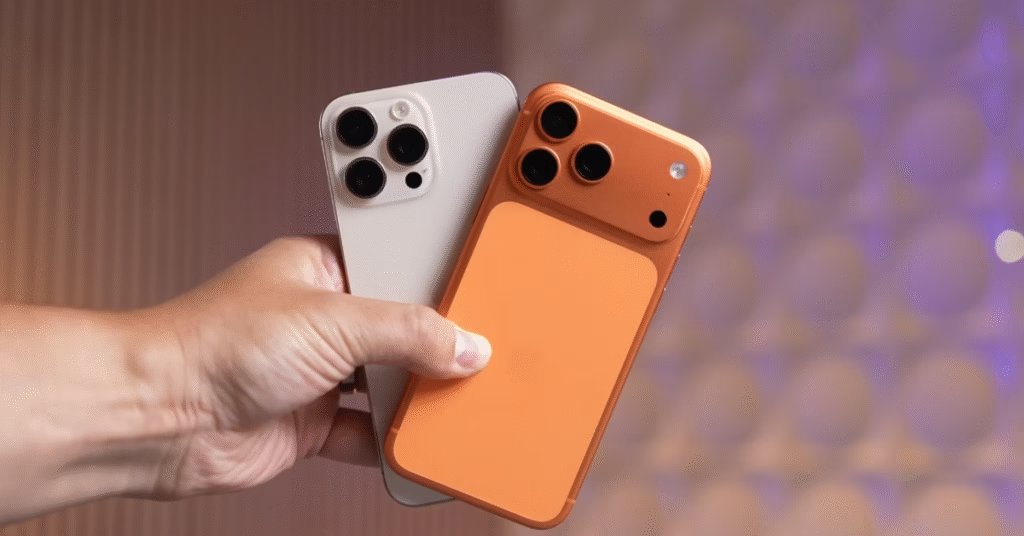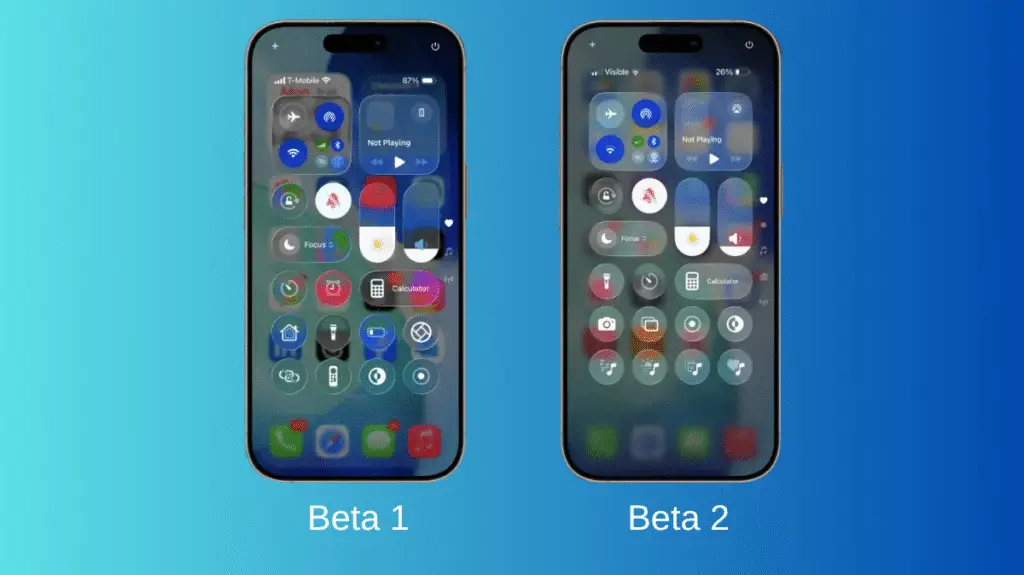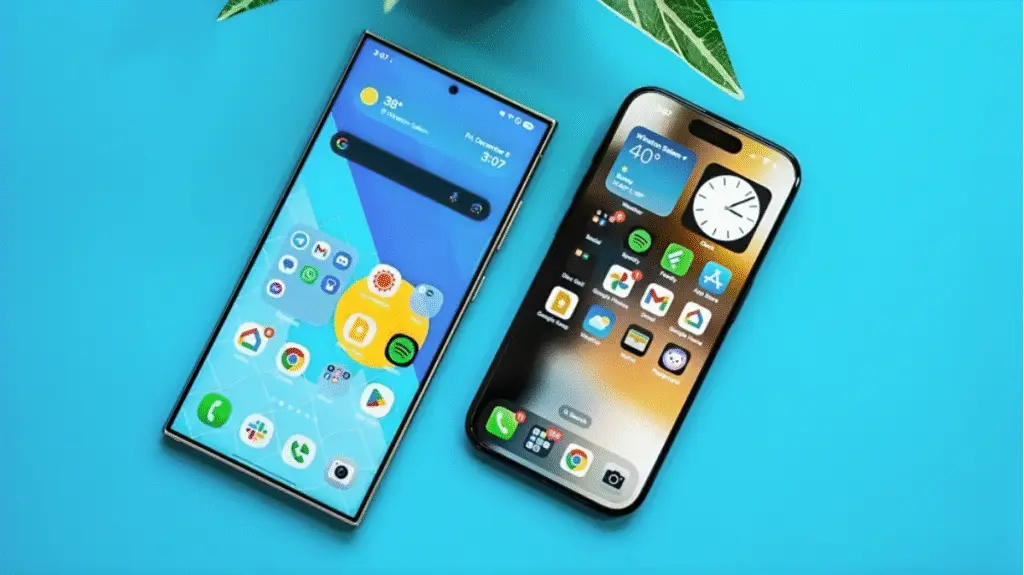
Having used both the iPhone 16 Pro Max and the iPhone 17 Pro Max for a few weeks each, I can confidently say that Apple’s latest flagship might look familiar on the surface, but the changes underneath are surprisingly meaningful. It’s one of those upgrades that doesn’t scream “new” when you unbox it but you start to notice the improvements once you live with it day to day.
Let’s break it down based on design, display, performance, camera, and battery and I’ll share where the real differences actually matter.
Design and Build: Aluminum Over Titanium
When I first switched from the 16 Pro Max to the 17 Pro Max, the first thing I noticed wasn’t the camera bump, it was the feel. The older model had that titanium frame, which felt premium but also tended to hold onto fingerprints. Apple’s decision to move back to aluminum raised eyebrows, but after daily use, I get it.
The new material helps with heat management and makes the phone slightly lighter. However, I’ll admit, I preferred the grip of the iPhone 16 Pro Max. Its flatter edges made it easier to hold, while the softer, rounder corners of the 17 Pro Max, though more comfortable, can feel a bit slippery.
That massive camera module? Yes, it’s bigger and yes, it looks a bit exaggerated at first. But it houses an upgraded setup, and Apple rearranged the internal components to make room for better cooling and antennas. You eventually stop noticing the bump, especially when you realize what it’s capable of.
Quick Comparison
| Specification | iPhone 17 Pro Max | iPhone 16 Pro Max |
|---|---|---|
| Body Material | Aluminum frame, matte finish | Titanium frame, glossy finish |
| Display | 6.7″ OLED, 3000 nits peak, anti-glare | 6.7″ OLED, 2000 nits peak |
| Chipset | A19 Pro (better thermals, new vapor cooling) | A18 Pro |
| Main Cameras | 48MP (wide) + 48MP (ultrawide) + 48MP (telephoto, 4x optical) | 48MP (wide) + 12MP (ultrawide) + 12MP (telephoto, 5x optical) |
| Front Camera | 12MP square sensor, better stabilization | 12MP standard sensor |
| Video Recording | ProRes RAW, Log2, requires external SSD | ProRes and Log support |
| Battery | ≈5,000 mAh (eSIM) / ≈4,800 mAh (physical SIM) | ≈4,700 mAh |
| Charging | 27W wired, MagSafe, Qi2 compatible | 27W wired, MagSafe |
| Weight | 233g | 227g |
| Software | iOS 26 | iOS 18 |
Disclaimer: Specs and prices may vary by region. Always confirm with official sources.
Display: Minor Upgrade
Both models feature stunning OLED panels, but the iPhone 17 Pro Max brings two noticeable improvements: brightness and anti-glare. The newer display hits a peak of 3,000 nits, compared to 2,000 nits on the 16 Pro Max.
The difference is most noticeable outdoors. On a sunny day, the newer phone stays effortlessly visible. Apple also added an anti-glare coating, which helps a lot with reflections, though it’s not quite as aggressive as the matte finish on Samsung’s S25 Ultra.
Otherwise, color accuracy, HDR, and motion smoothness remain equally excellent on both. If you’re coming from the iPhone 16 Pro Max, you’ll appreciate the clarity boost, but it’s not a night-and-day leap.
Performance: The Real Leap Forward
This is where things start to get exciting. The iPhone 17 Pro Max is powered by the A19 Pro chip, which doesn’t just offer faster raw performance but also better sustained power thanks to a redesigned internal layout and improved thermal management.
Apple’s new vapor cooling system and aluminum body dissipate heat more effectively, meaning the phone can maintain higher speeds for longer periods. I tested both devices running demanding games and 3D Mark stress tests. The iPhone 16 Pro Max started throttling after just one full cycle, while the 17 Pro Max held steady before gradually reducing performance.
In real use, this translates into smoother gameplay, faster video rendering, and more stable performance under load. For everyday users, you might not notice it while browsing or chatting but for gamers, creators, or anyone using heavy apps, the difference is substantial.
Camera: Evolution Over Revolution
The cameras on these two phones look similar on paper, but Apple made some thoughtful adjustments. The iPhone 17 Pro Max now uses 48MP sensors across all three lenses wide, ultra-wide, and telephoto.
The telephoto lens, however, has changed from 5x zoom on the 16 Pro Max to 4x on the new one. At first, I thought this was a step backward, but Apple compensates using sensor cropping and software enhancements to provide more usable zoom levels up to 40x digital, compared to 25x before.
In everyday photography, both phones deliver sharp, vibrant shots, but I noticed that the 17 Pro Max brings back a warmer tone the classic “Apple look” many missed. Low-light shots also appear slightly cleaner and more natural.
For professionals, the iPhone 17 Pro Max adds ProRes RAW and Log2 video recording but you’ll need the Final Cut Camera app and an external drive to make use of it. It’s a great step for creators, though the average user won’t touch these modes.
The front camera, on the other hand, sees a bigger change. It now uses a square sensor that allows more flexibility in cropping. Whether you’re shooting selfies, vlogs, or short videos, the results are sharper, and the stabilization is excellent.
Battery Life: A Slight Edge
Apple claims better efficiency, but in reality, the difference is subtle. The iPhone 17 Pro Max has a slightly larger battery over 5,000 mAh in the eSIM model (and around 4,800 mAh in others).
In my testing, both phones lasted comfortably through a full day of heavy use. Interestingly, my 16 Pro Max actually performed a little better in some battery tests, likely due to its titanium frame dissipating less heat.
Still, the 17 Pro Max charges just as fast, stays cooler under pressure, and handles background tasks more efficiently. If battery anxiety is your concern, either phone will easily handle your day-to-day use.
Software and Real-Life Experience
Both phones run iOS 26 and feel equally smooth. Apple’s software optimization ensures even older flagships stay relevant. However, the iPhone 17 Pro Max benefits from better performance during multitasking, especially when switching between camera modes, gaming sessions, or editing apps.
The new anti-glare screen and improved cooling make using the phone outdoors or during long sessions much more comfortable. But truthfully, if you already have the iPhone 16 Pro Max, you won’t feel left behind. It’s still a powerhouse.
Should You Upgrade?
Here’s the truth: it depends on how you use your phone.
If you’re a gamer, video creator, or someone who pushes your device hard, the iPhone 17 Pro Max’s improved cooling, sustained performance, and camera flexibility will be worth the jump.
But if your 16 Pro Max still runs perfectly fine and you’re happy with its design, there’s no urgent reason to switch. The differences are meaningful, yes, but not revolutionary for casual users.
If you can find a discounted 16 Pro Max, it’s still a premium experience and might even be the smarter buy for 2025.
Final Thoughts
After using both phones extensively, I’d say the iPhone 17 Pro Max is a refinement rather than a revolution. It feels faster, cooler, and more versatile, especially for creators. But the iPhone 16 Pro Max still holds its own in almost every area and may even feel more comfortable to hold.
The bottom line: if you want the newest and most capable iPhone, go for the 17 Pro Max. But if you value practicality and design, the 16 Pro Max continues to be an excellent choice.
See Also Best iPhone to Buy in 2025?
FAQs
Is the iPhone 17 Pro Max worth upgrading from the 16 Pro Max?
If you value better sustained performance, improved thermals, and new pro camera tools, yes. For regular use, the older model is still strong.
Did Apple change the design completely?
Not entirely. The biggest change is the move to aluminum and the larger camera bump for better cooling and antenna placement.
Which has better battery life?
Both are similar, though results vary slightly depending on region (eSIM vs physical SIM versions).
Are the cameras really that different?
The 17 Pro Max offers more flexibility and smoother zoom transitions, but both produce excellent results.
Should I buy the older model in 2025?
Absolutely, if you find it at a good price. It’s still fast, premium, and receives full software support for years.



